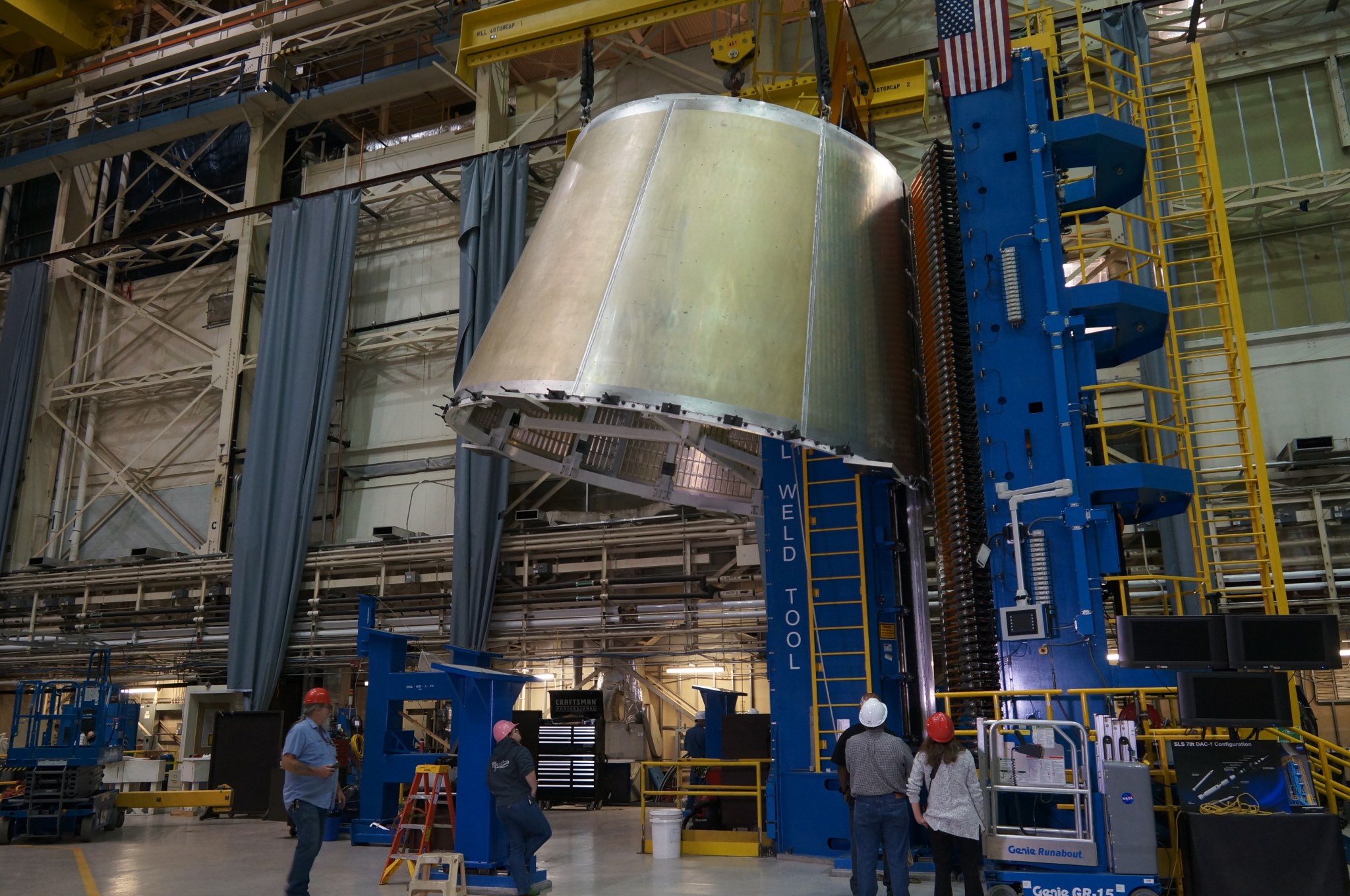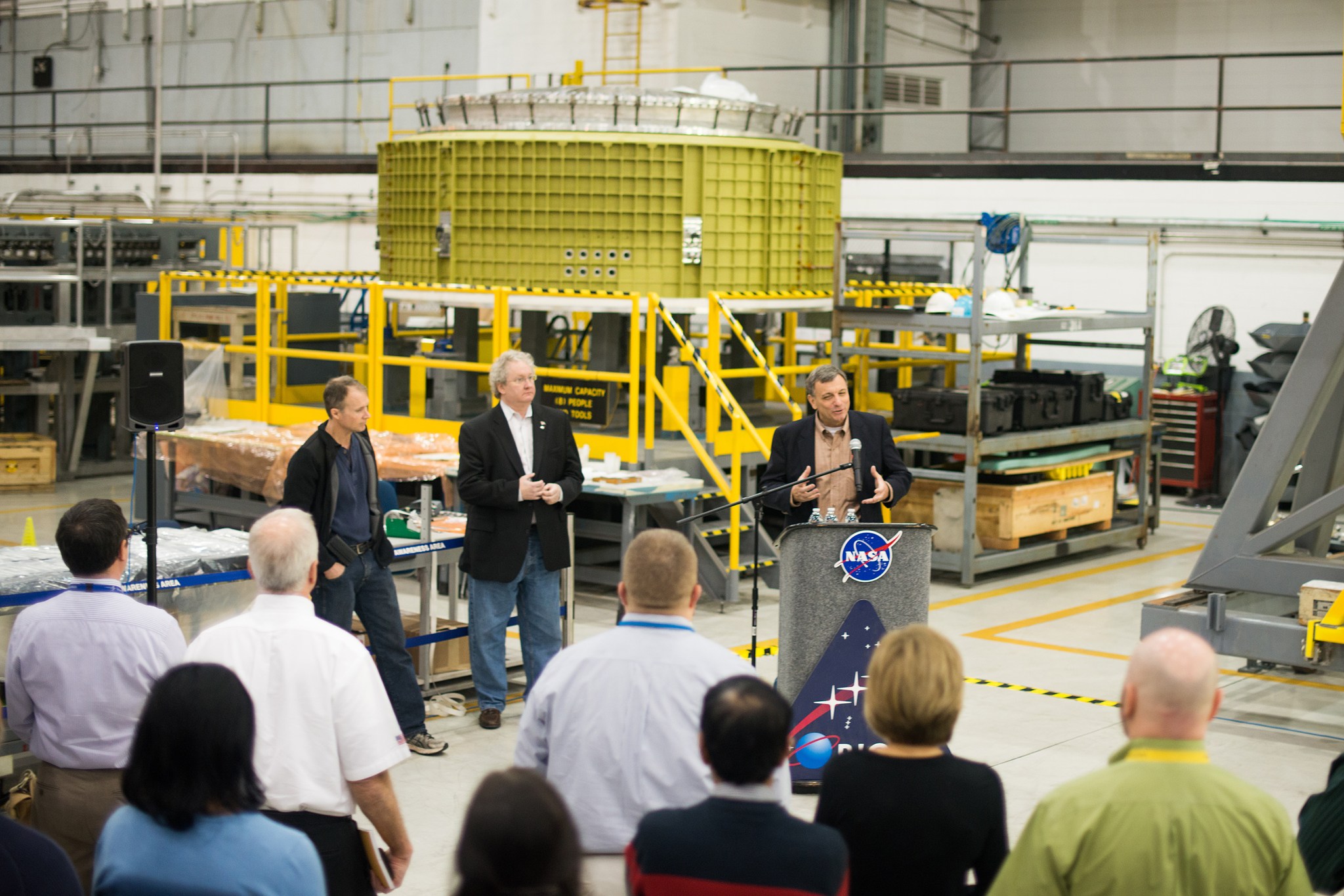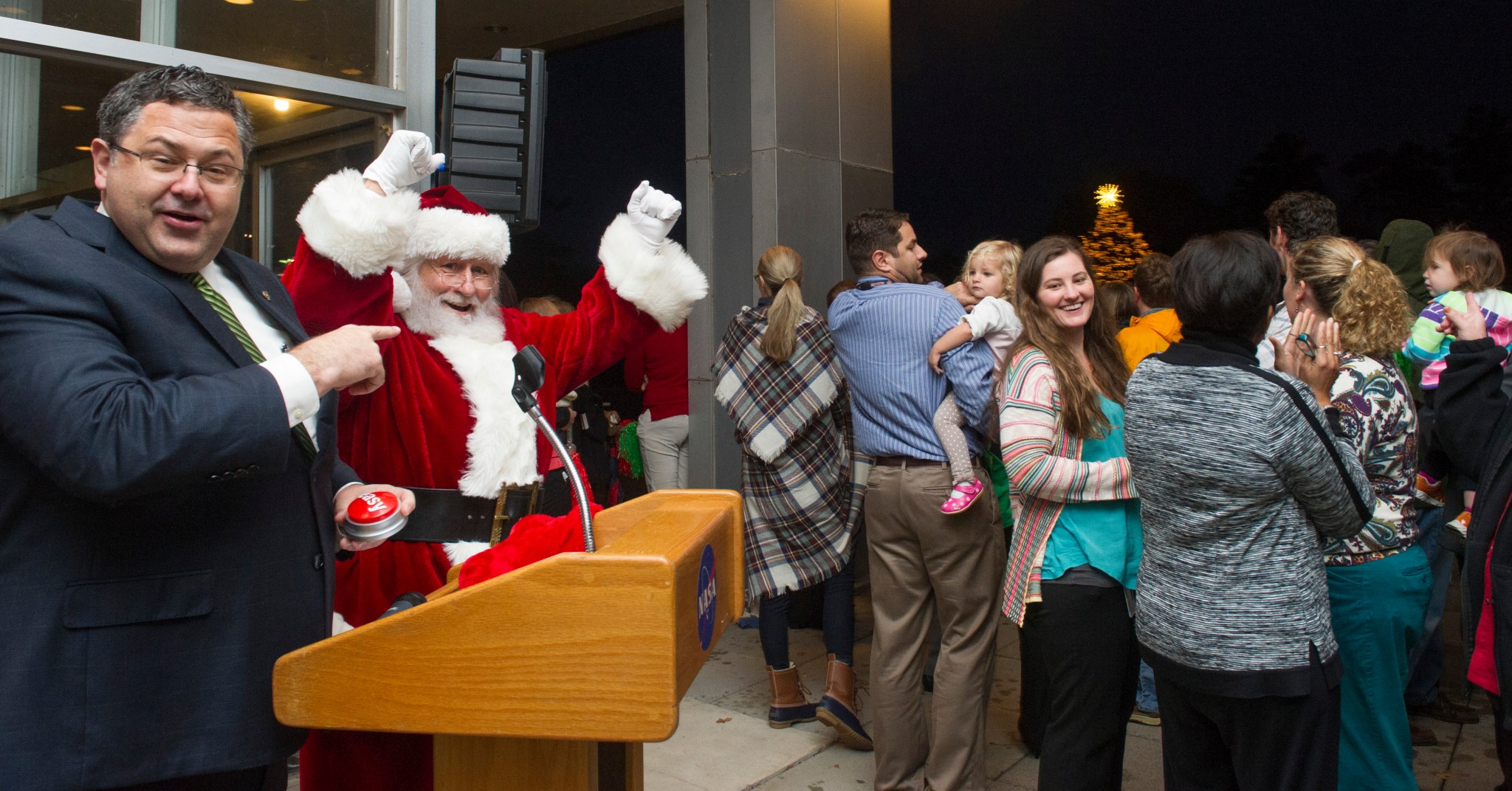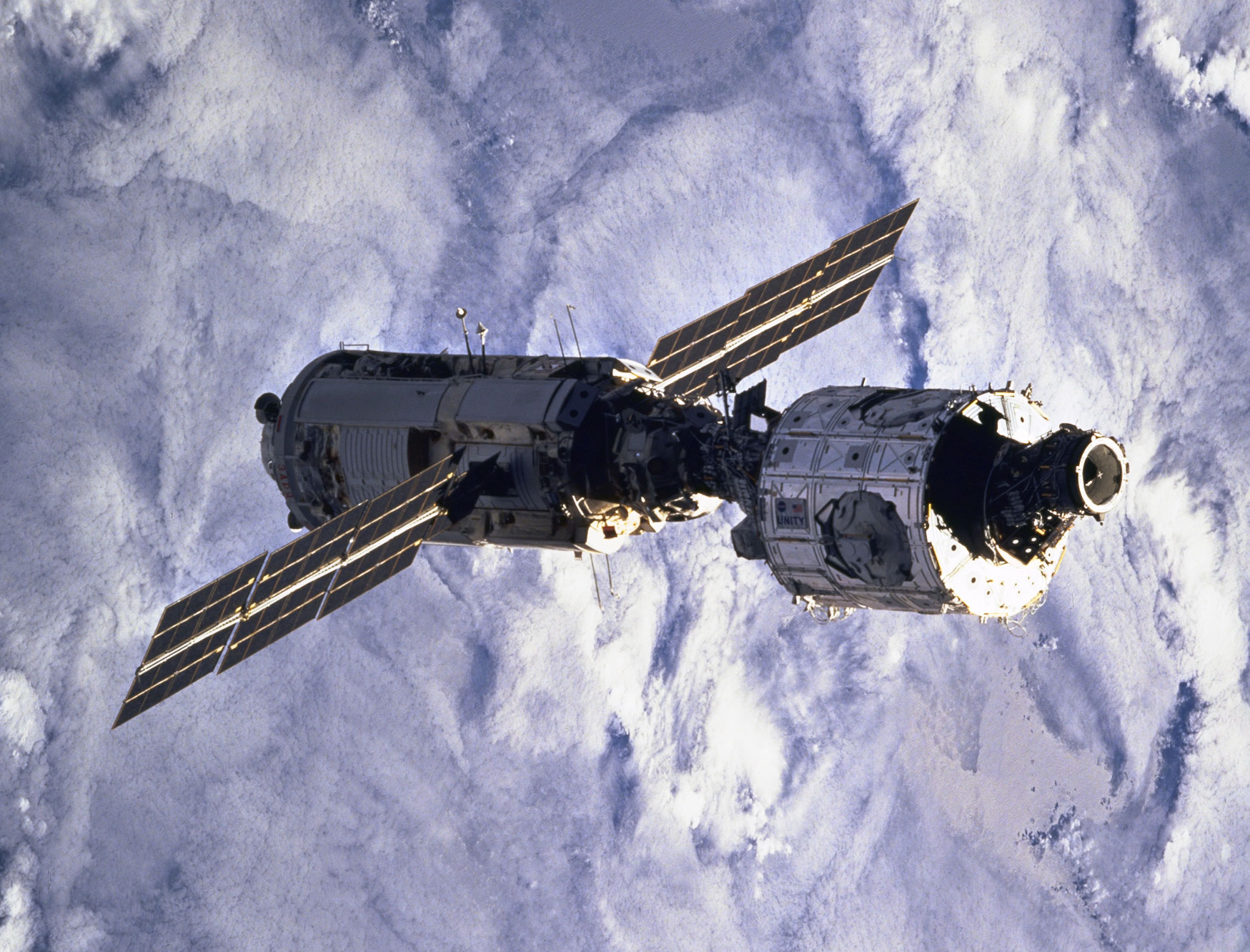In This Week’s Star
- Progress Continues on Test Version of SLS Connection Hardware
- Michoud Team Recognized for Orion Work by NASA, Lockheed Martin
- Marshall to Hold Team Holiday Reception Dec. 3
- First of December Brings Annual Tree Lighting Ceremony at Marshall Center
- This Week in NASA History: First American Node of International Space Station Launches — Dec. 4, 1998
- Anniversary of First 3-D Printed Part In Space Featured on ‘This Week @NASA’
Progress Continues on Test Version of SLS Connection Hardware

The forward cone for a test version of the launch vehicle stage adapter — part of NASA’s new rocket, the Space Launch System — is lifted out of a weld tool following completion of eight vertical welds on the hardware at NASA’s Marshall Space Flight Center. The forward and aft rings also have been completed for the structural test article. The LVSA will connect two major sections — the core stage and the interim cryogenic propulsion stage — of the SLS. The LVSA structural test article will be stacked with other prototypes of the upper part of the rocket and tested in early 2016 at Marshall to verify the integrity of the hardware and ensure it can withstand the loads it may experience during flight. Teledyne Brown Engineering of Huntsville is the prime contractor on the LVSA work. To view a video on the latest progress, click here.
Michoud Team Recognized for Orion Work by NASA, Lockheed Martin

Mark Kirasich, manager of NASA’s Orion program, speaks with Lockheed Martin employees about their progress on the Orion Exploration Mission-1 hardware being assembled at NASA’s Michoud Assembly Facility. The presentation was part of a holiday all-hands event Nov. 25 thanking the production team for its hard work and efforts. Kirasich is joined by Charles Lundquist, far left, NASA manager of the Orion Crew and Service Module; and Bill Hill, deputy associate administrator for NASA’s Exploration Systems Development Division.
Marshall to Hold Team Holiday Reception Dec. 3
NASA’s Marshall Space Flight Center team members are invited to share in the holiday spirit Dec. 3 during the center’s annual holiday reception from 3-5 p.m. in Activities Building 4316.
Marshall Acting Director Todd May will provide welcoming remarks. The Italian-themed celebration will include complimentary hors d’oeuvres, and beverages, including beer and wine for all participating civil-service employees, contractors and retirees.
Three drawings for door prizes will be held. Team members may enter the drawings upon arrival at 4316 by writing their names on ping-pong balls to be randomly drawn from a container. Employees must be present at the time of the drawing to win. The Voices of Marshall chorus will perform at 3:15 p.m. The Marshall Exchange Music Club band will take the stage at 4 p.m.
Due to the late-afternoon start, organizers said, buses will not operate during the event. The annual holiday reception is sponsored by the Marshall Exchange.
Visit ExplorNet for updates.
First of December Brings Annual Tree Lighting Ceremony at Marshall Center

The holidays are here again as dozens turn out to enjoy the traditional tree lighting ceremony Dec. 1 outside of Building 4200 at NASA’s Marshall Space Flight Center. Leading the countdown is acting Marshall Center Director Todd May, left, along with the jolliest man in red, Kris Kringle, AKA Santa Claus. Following the tree lighting, everyone gathered inside to enjoy holiday music, fellowship and plenty of sweet treats as children from the Marshall Center Day Care had holiday photos taken on Santa’s lap.
This Week in NASA History: First American Node of International Space Station Launches — Dec. 4, 1998

This week in 1998, the Unity Node, the first piece of the International Space Station provided by the United States, launched aboard space shuttle Endeavour en route to be mated with the Russian Zarya module. The first of three connecting nodes, Unity was manufactured at NASA’s Marshall Space Flight Center. The NASA History Program documents and preserves NASA’s remarkable history through a variety of products — photos, press kits, press releases, mission transcripts and administrators’ speeches. For more pictures like this one and to connect to NASA’s history, visit the History Program’s Web page.
Anniversary of First 3-D Printed Part In Space Featured on ‘This Week @NASA’
The one-year anniversary of the first part 3-D printed on the International Space Station is featured in the latest edition of “This Week @NASA,” a weekly video program broadcast nationwide on NASA-TV and posted online.
The part – a spare faceplate for the printer itself, was made from instructions uploaded by ground controllers at the Payload and Operations Integration Center located at NASA’s Marshall Space Flight Center on Nov. 24, 2014. Developing the ability to successfully print 3-D parts in space could enable astronauts to make spare parts and tools when needed on long duration spaceflights, such as the journey to Mars. View this and previous episodes at “This Week @NASA” or at https://www.youtube.com/user/NASAtelevision.


























